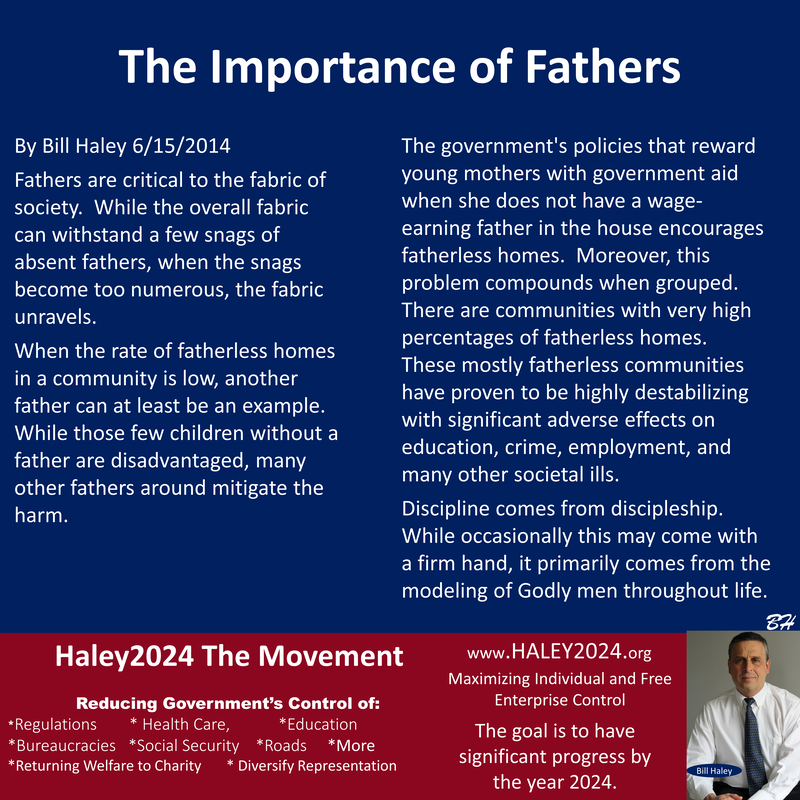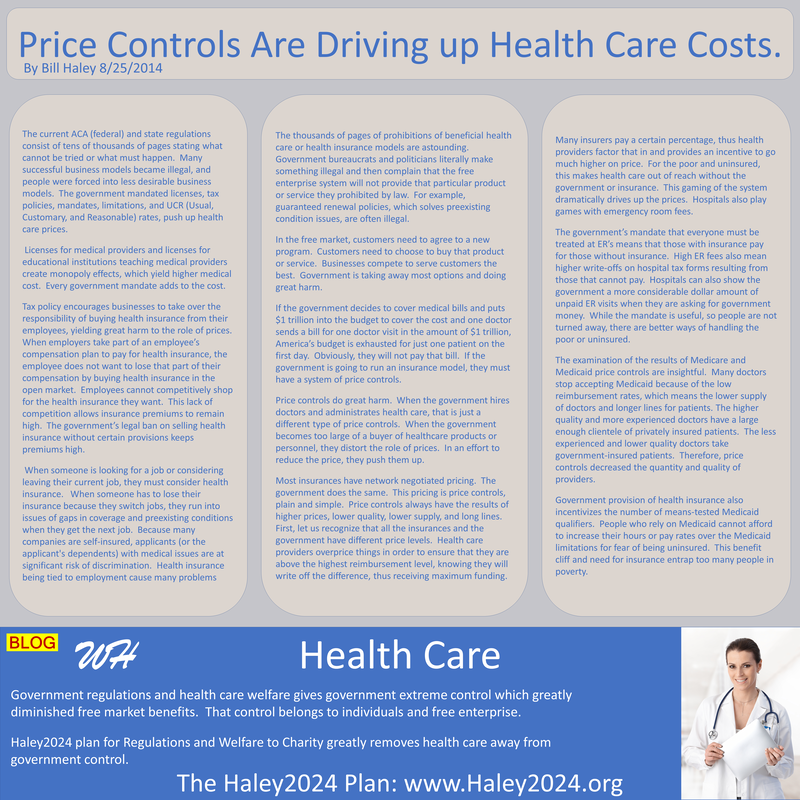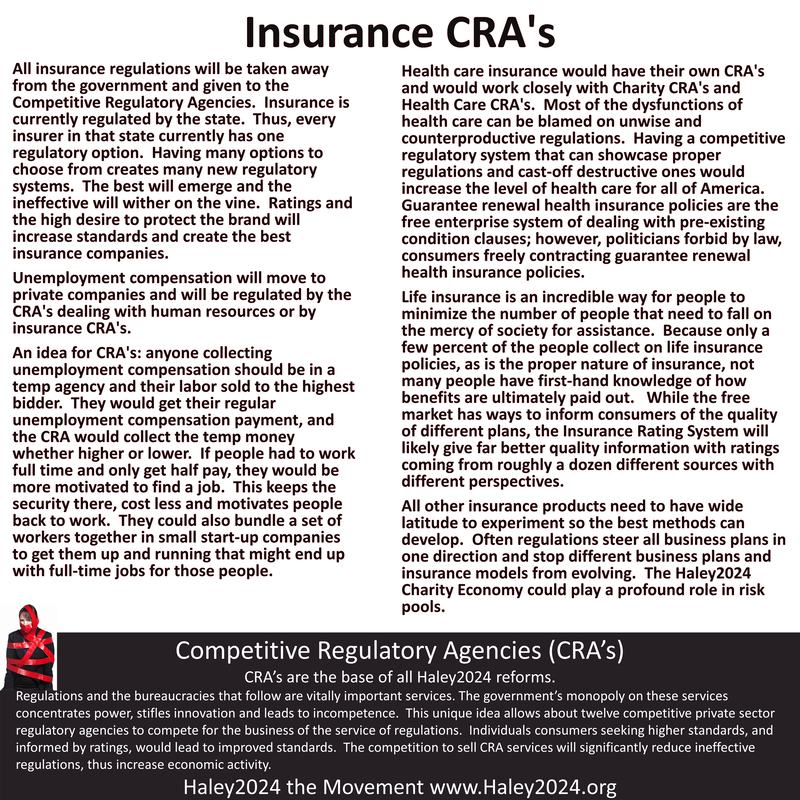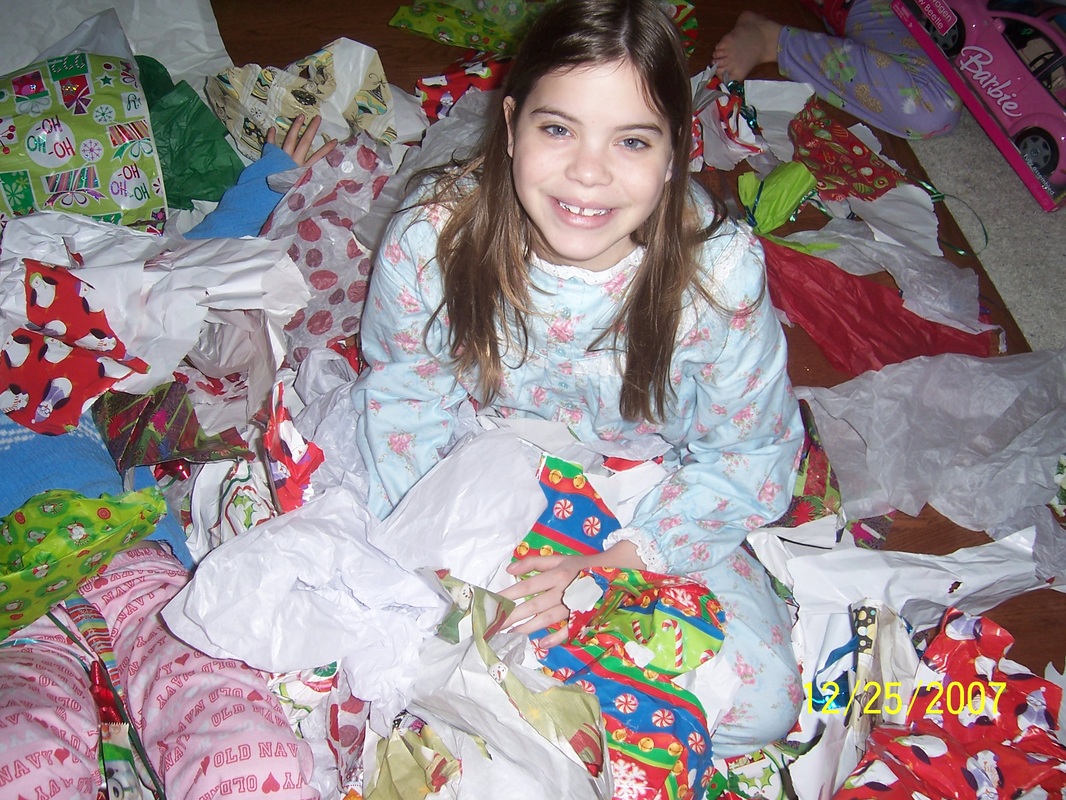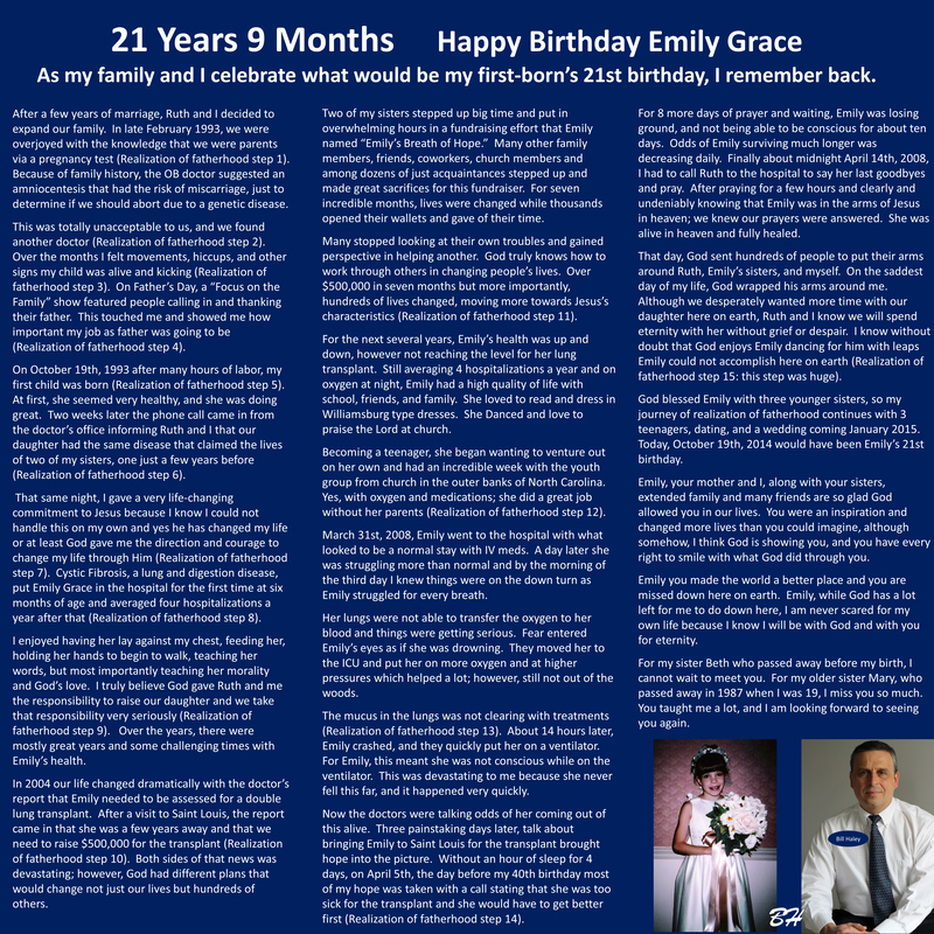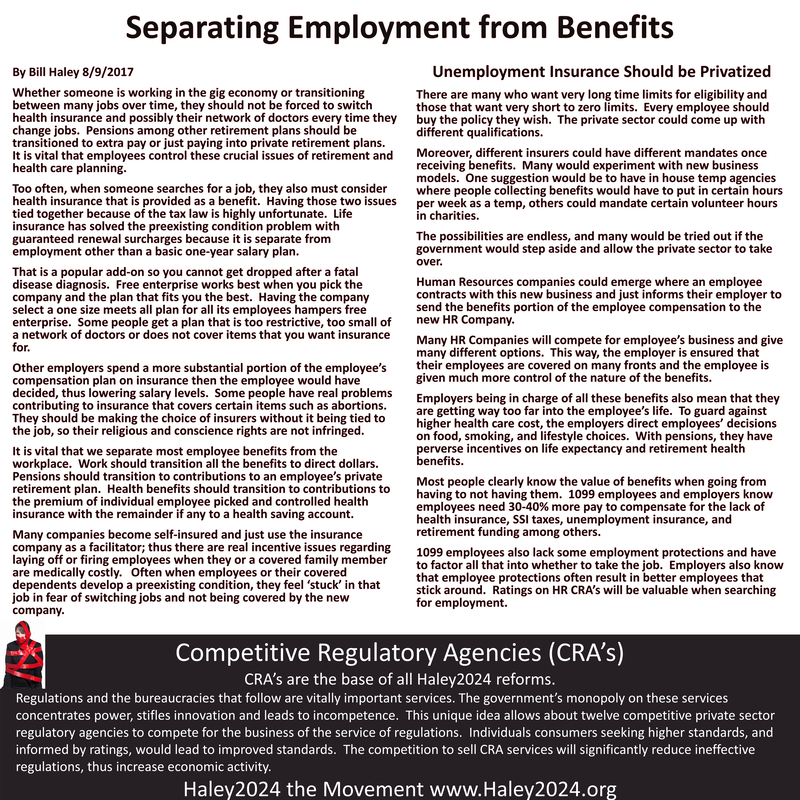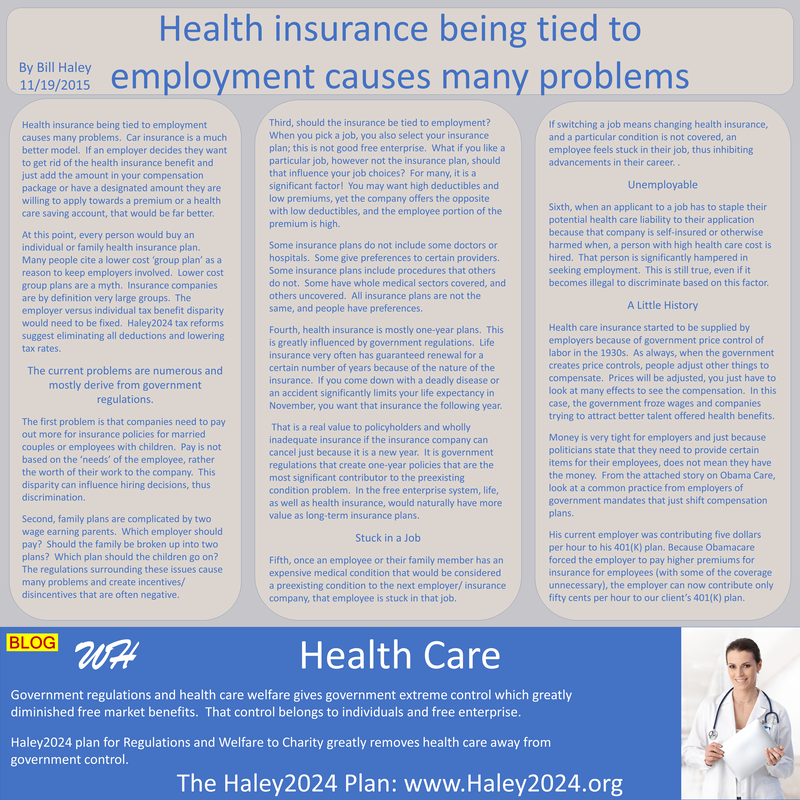| By Bill Haley 10/25/2019 It is the yearly health care open enrollment season, and I am not happy. I take great pride in my family, and government regulations are firmly nudging my wife and me to have separate health insurance policies. It is not as bad as the government offering benefits to a mother if the wage-earning father does not live with his children, but I want to keep my family plan! I am a family man, and it matters to me! |
| My story of health insurance started back in 1993. That year I started a new job, and my first child was born. When my wife, Ruth, became pregnant, there was no doubt we would be a one-income family; thus, I signed up for the family plan through my new employer. I thought it was strange that I had to change health insurance when I changed employers, so I looked into it. |
A Little History
| It turns out that in the great depression, FDR put wage controls on employers, thus removing the vital role of prices in the labor market. Employers worked around the issue by offering health insurance benefits. Later, when the wage controls were lifted, congress inserted a loophole in the tax code to exempt employer-provided health insurance from income taxes. The same tax deduction was not offered to people buying health insurance separate from employment. When tax rates were over 50%, the extra tax burden pushed the vast percentage of health insurance policies through employers. When people interviewed for a new job, they had to consider insurance policies as well. |
The Early Years
| Two weeks after my first daughter was born, Ruth and I received some devastating news. My sweet Emily was diagnosed with a disease that took two of my sisters away from me. We knew that many hospitalizations were in the future, and the medications were going to be expensive. While Ruth and I dealt with the emotions of a sick infant and toddler going to the hospital for a two-week stay every couple of months, we also dealt with health insurance and my job. |
| I was scared to death of being laid off or making a mistake where I could get fired. My company was self-insured and was paying two to three times my salary in health care claims. I did not dream of changing employers because the risk of preexisting condition clauses might leave my child without much-needed healthcare. I tried not to take many days off from work because I did not want my employer looking into how much I cost the company. |
| Through the first ten years of Emily’s life, I heard of many fathers abandoning their families because of the stress of constant hospitalizations. They were right that it was hard, stressful, and gut-wrenching. My marriage was always strong, but I understood how the stress, heartache, and financial difficulties strained at the marital bonds. I went strong in the other way and took great pride in being a family man. I had three other children as well, and all four of my children needed a father and their mother. I also needed to show them a proper husband and wife relationship. We needed to model a healthy family. |
2004 Was the Most Amazing and Difficult Year of My Life
| Early in 2004, the doctors told Ruth and me that Emily needed to go on the lung transplant list. That is not an easy conversation with the doctors or with Emily. In May, the hospital sent us a letter that the insurance was not likely going to cover the VERY expensive transplant. They were dealing with a lifetime maximum on the health insurance as well as several items surrounding a lung transplant that the insurance does not cover. The hospital ‘strongly’ suggested that we have $500,000 in fundraising. |
| The last seven months of 2004 was full of major fundraisers averaging twice a week. Chili-cookoffs, softball and golf tournaments, road rallies, raffles, vacation bible school, concerts, major league baseball players signing baseballs, bake sales, silent auctions, and others often raised five figures. The schedule was grueling; however, the outpouring of love and donations touched Ruth and me in significant ways. The amount of volunteer hours from family and friends encouraging the donations of $515,154 is a testimony of God profoundly working through His people. |
The Next Three Years
| Miraculously, the lifetime insurance limit was raised from $750,000 to $1 million as we topped $700,000. You can not just order up the lungs when the money is there. There was still a waiting period. Emily was put on the list a little early, so she would be near the top of the list when she hit the crucial window of usable lung function. If you wait until you are in that window, the window is likely to close on the bad side. Emily continued with hospitalizations every two months and expensive daily treatments at home. |
| While I was pretty established at my job, I always had that fear that if I was separated from my employer, that my insurance would go with it. No insurer or employer wants to sign up to cover over $100,000 per year of claims, especially with a well-publicized transplant on the horizon or new high-cost medications in the final stages of the FDA approval. The window of useful lung function opened and closed within a day with a nasty infection. Sadly, I received my last medical bill for Emily in April of 2008, totaling over $200,000 for her final two weeks. |
A Two-Income Family
| For the last eleven years, we became a typical medical use family. As my three daughters became teenagers, Ruth went back to school and entered the workforce in 2014. Ruth’s employer offered insurance, and we discovered a dilemma we had not dealt with before. The ACA (Obamacare) forced employers to charge employees a surcharge if their spouse was also offered insurance by an employer. The law is firmly nudging two-income families to have separate insurance by mandating a $1,200 surcharge. |
| If the family decides that one insurance is better than the other, the company with the better coverage must bear the financial weight of covering the entire family, leaving the employer with low-quality insurance without any burden. Ruth’s employer offered a good plan; however, we are a family, so we paid the surcharge. Ruth’s employer's financial burden was lessened, and my employer paid more. |
My Daughter’s Family
| This year, I am calling my 24-year old married daughter about health insurance. She could get insurance through Ruth’s or my employer. My daughter’s employer is offering health insurance. She also has options of her husband’s military reserve coverage and her husband’s employer’s health insurance, thus five options. All the options have a cost to my daughter, but all the alternatives also have a cost or savings for each of the five employers. Every insurance option has different doctors that are preferred and have different terms, so that is a significant factor as well. |
The Solution
| Economics is the study of incentives, and this is just a few of the several hundred perverse incentives harming America's health care system. The perverse incentive created by the ACA to move away from the family plan really hits me the wrong way. Most problems surrounding health care can find their origins within government regulations. The best solutions are not to add more regulations or fix what is there; the best solution is simply to start rapidly repealing regulations. If you are strictly looking at the issues addressed here, let’s move away from health insurance being tied to employers. |
